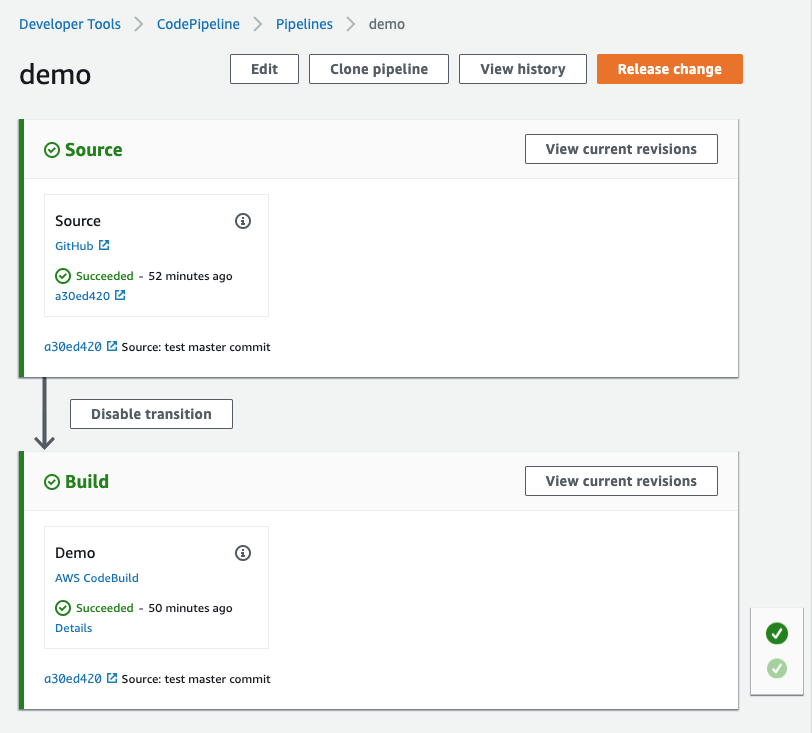Quick Start
In a hurry? No problem! Here’s a quick start to get going.
Summary
gem install pipedream
cd <your-project>
pipe init # generates starter .pipedream files
# edit .pipedream/pipeline.rb
pipe deploy # create the CodePipeline pipeline via CloudFormation
pipe start # start a CodePipeline pipeline execution
What Happened?
Here are a little more details on what the summarized commands do. First, we install the pipedream tool.
gem install pipedream
Change into your project directory.
cd <your-project>
If you need a demo project, you can try this demo project: tongueroo/demo-ufo.
git clone https://github.com/tongueroo/demo-ufo demo
cd demo
Create the starter .pipedream files in the project.
pipe init # generates starter .pipedream files
An important generated file is .pipedream/pipeline.rb. The starter file defines the pipeline via an CodePipeline DSL. It looks something like this:
stage "Source" do
github(
source: "user/repo", # replace with your repo
auth_token: ssm("/github/user/token") # replace with your token
)
end
stage "Build" do
codebuild "demo"
end
The pipeline definition is much shorter than typical CloudFormation code. In this short pipeline, there are 2 stages:
- Downloads the source code from Gitub and uploads it to S3 as an output artifact.
- Starts some codebuild project with the code that was previously uploaded to s3 as the input artifact.
Note, you need to have a codebuild project already created as a prerequisite. The example instructions for that are here: Create CodeBuild Project.
You can then deploy or create the pipeline with a single command:
pipe deploy
This deploys a CloudFormation stack that creates a CodePipeline pipeline and IAM role. The IAM role permissions is defined in .pipedream/role.rb via the IAM Role DSL.
Once the stack is complete. You can start the CodePipeline pipeline via the CLI or the CodePipeline console. Here is the CLI command:
pipe start
Here’s what CodePipeline pipeline output looks like:

Pro tip: Use the <- and -> arrow keys to move back and forward.
Edit this page
See a typo or an error? You can improve this page. This website is available on GitHub, and contributions are encouraged and welcomed. We love pull requests from you!
- Suggest an edit to this page (here's the contributing guide).
- Open an issue about this page to report a problem.